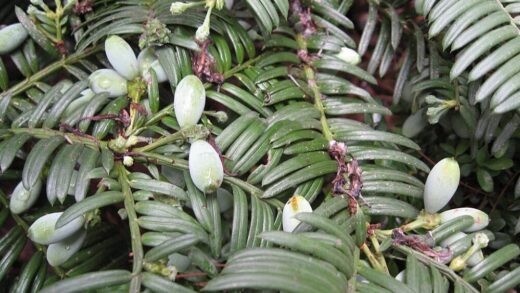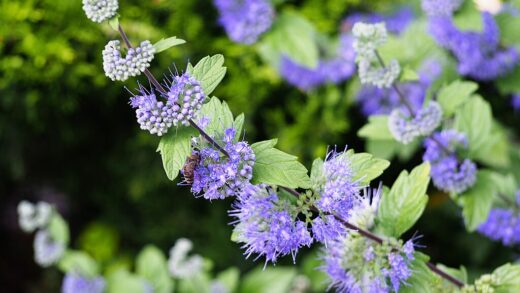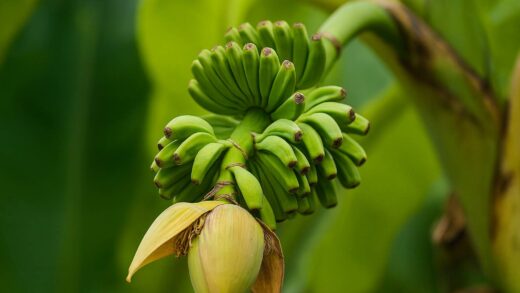To achieve a truly abundant harvest of lush, aromatic basil, it is essential to understand and manage its specific nutrient requirements. While basil is not an excessively demanding plant, it is a fast-growing herb that produces a large amount of leafy biomass, a process that requires a steady and balanced supply of nutrients from the soil. Providing these essential elements through proper soil preparation and supplemental fertilization is key to promoting vigorous growth, deep green color, and, most importantly, the development of the essential oils that give basil its signature flavor and fragrance. The goal is to nourish the plant consistently without over-fertilizing, which can lead to undesirable consequences such as weak growth or a diluted taste.
Basil, like all plants, requires a range of macronutrients and micronutrients for healthy development. The three primary macronutrients, often seen as the N-P-K ratio on fertilizer labels, are nitrogen (N), phosphorus (P), and potassium (K). Nitrogen is arguably the most crucial for basil, as it is the key component in chlorophyll and is directly responsible for promoting leafy, vegetative growth. Phosphorus plays a vital role in root development, flowering, and energy transfer within the plant. Potassium is essential for overall plant vigor, disease resistance, and regulating water movement. A deficiency in any of these key nutrients will manifest in visible symptoms and reduced productivity.
The foundation of good nutrition for basil begins with the soil. Before planting, enriching the garden bed or container mix with a generous amount of well-decomposed organic matter, such as compost or aged manure, is the single most important step you can take. Organic matter acts as a slow-release fertilizer, providing a broad spectrum of nutrients over time as it breaks down. It also dramatically improves soil structure, aeration, and water-holding capacity, creating a healthy environment for roots to thrive and efficiently absorb the nutrients that are available. A soil rich in organic matter provides a strong baseline of fertility for the entire growing season.
Throughout the peak growing season, however, the nutrients initially present in the soil can become depleted, especially for plants grown in containers where the soil volume is limited. This is when supplemental fertilization becomes necessary to maintain the plant’s momentum. The key is to provide a continuous, low-level supply of nutrients rather than infrequent, heavy doses. This “little and often” approach prevents the shock of a sudden nutrient overload and supports the kind of steady, sustained growth that results in the highest quality leaves. Careful and consistent feeding is the bridge between a healthy plant and a truly exceptional one.
Understanding fertilizer types
When selecting a fertilizer for your basil, you will encounter a variety of options, which can be broadly categorized as either synthetic or organic. Synthetic fertilizers are manufactured chemical compounds that provide nutrients in a form that is immediately available to the plant. They are typically fast-acting and can produce a quick growth response. However, they do not contribute to the long-term health of the soil, and if over-applied, they can lead to salt buildup in the soil and potentially “burn” the plant’s roots. They offer precise nutrient ratios but lack the soil-building properties of organic alternatives.
More articles on this topic
Organic fertilizers, in contrast, are derived from natural sources such as plant matter (like alfalfa meal or kelp), animal products (like bone meal or fish emulsion), or mineral deposits. These materials must be broken down by microorganisms in the soil before their nutrients become available to the plant. This process results in a slower, more gradual release of nutrients that is less likely to burn the plant. Furthermore, organic fertilizers feed the beneficial microbial life in the soil, improving its structure and long-term fertility. For basil, which is grown for its flavor, many gardeners prefer organic methods, believing they contribute to a better taste profile.
Liquid fertilizers are a popular choice for feeding basil, particularly for plants grown in containers. They are mixed with water and applied during regular watering. This method provides a quick boost of nutrients that are readily absorbed by the plant’s roots. Both synthetic and organic liquid fertilizers are widely available, with common organic options including compost tea, fish emulsion, and liquid kelp. When using liquid fertilizers for basil, it is often recommended to dilute them to half the strength suggested on the label and apply them every two to four weeks to provide a steady, gentle feed.
Granular fertilizers are another common form, designed to be sprinkled on the soil surface or mixed into the soil during planting. These fertilizers, which can also be synthetic or organic, break down more slowly over time, releasing their nutrients with each watering. They offer a more convenient, “set-it-and-forget-it” approach compared to liquid feeds. A balanced, all-purpose granular organic fertilizer worked into the soil at planting time can provide a solid nutritional base for several weeks or even months, reducing the need for frequent liquid feeding during the early stages of the plant’s growth.
Recognizing nutrient deficiencies
Basil plants will often display visible symptoms when they are lacking essential nutrients, and learning to recognize these signs can help you diagnose and correct the problem promptly. A nitrogen deficiency is one of the most common issues and is characterized by a general yellowing of the leaves, a condition known as chlorosis. This yellowing typically starts with the older, lower leaves and gradually progresses up the plant. Additionally, the plant’s overall growth will be stunted, and it will appear weak and spindly. A quick application of a nitrogen-rich liquid fertilizer, like fish emulsion, can often correct this issue.
More articles on this topic
A phosphorus deficiency, while less common, can also occur. The tell-tale signs of a lack of phosphorus include stunted growth and leaves that take on a dull, dark green or even purplish hue. This purpling is often most noticeable on the leaf veins and stems. Since phosphorus is crucial for root development, a deficiency can severely limit the plant’s ability to establish itself. Adding bone meal or a fertilizer with a higher middle number (the ‘P’ in N-P-K) to the soil can help to remedy this.
A potassium deficiency can manifest in several ways. A classic symptom is the yellowing or browning of the leaf margins and tips, starting on the lower, older leaves. The leaves may also appear scorched around the edges. Potassium is vital for the plant’s overall resilience, so a deficient plant may be more susceptible to drought stress and disease. Amending the soil with sources of potassium like kelp meal or a balanced fertilizer that contains adequate levels of this nutrient can resolve the problem.
It’s also important to note that sometimes, nutrient deficiency symptoms can be caused by factors other than a lack of nutrients in the soil. For example, soil that is too compacted, waterlogged, or has an improper pH level can prevent the plant’s roots from being able to absorb the nutrients that are present. Before rushing to add more fertilizer, it’s always a good idea to assess the overall growing conditions. Ensuring proper drainage, aeration, and a soil pH between 6.0 and 7.0 is crucial for effective nutrient uptake.
The role of organic matter
The single most effective way to provide a broad spectrum of nutrients and create a healthy growing environment for basil is to incorporate a generous amount of high-quality organic matter into the soil. Organic matter, in the form of compost, well-rotted manure, leaf mold, or worm castings, is the cornerstone of fertile soil. It is teeming with a diverse range of microorganisms that are essential for a healthy soil ecosystem. These microbes play a critical role in breaking down organic materials and converting them into forms of nutrients that plants can readily absorb.
Unlike synthetic fertilizers that just feed the plant, organic matter feeds the soil itself. As it decomposes, it provides a slow and steady release of not only the major macronutrients (nitrogen, phosphorus, and potassium) but also a full suite of essential secondary nutrients and micronutrients, such as calcium, magnesium, and boron. This balanced, slow-release nutrition is ideal for sustained, healthy growth and reduces the risk of over-fertilization. A soil rich in organic matter acts as a natural buffer, providing a consistent food source for your basil throughout the season.
Beyond its nutritional benefits, organic matter dramatically improves the physical properties of the soil. In heavy clay soils, it helps to separate the fine clay particles, creating better aeration and drainage and preventing the soil from becoming compacted and waterlogged. In sandy soils, which tend to drain too quickly, organic matter acts like a sponge, helping the soil to retain moisture and nutrients, making them available to the plant’s roots for longer periods. This improved soil structure encourages a deeper, more extensive root system, which is the foundation of a healthy and productive plant.
You can incorporate organic matter at the beginning of the season by mixing it into your garden beds or potting soil. You can also use it as a top-dressing or mulch around the base of your plants mid-season. As you water, the nutrients from this top layer will gradually work their way down into the root zone. Creating your own compost from kitchen scraps and garden waste is a sustainable and cost-effective way to produce a continuous supply of this invaluable soil amendment. By focusing on building healthy soil with plenty of organic matter, you create a resilient system that requires less intervention and supplemental fertilization.
A balanced fertilization schedule
For basil planted in a garden bed that has been well-amended with compost, supplemental fertilization may only be needed sparingly. After the plants have become established and are actively growing, you can apply a balanced, all-purpose liquid fertilizer at half-strength every three to four weeks. This will be sufficient to support vigorous growth throughout the main season. It’s particularly important to provide a feed after a heavy harvest to help the plant recover and produce new foliage. Always water the plant before and after applying liquid fertilizer to avoid burning the roots.
Container-grown basil has more demanding fertilization needs because the nutrients in the limited volume of potting soil are used up much more quickly. For potted basil, a more frequent feeding schedule is necessary to maintain productivity. Plan to feed your containerized basil with a half-strength balanced liquid fertilizer every two to three weeks during the spring and summer. As growth naturally slows in the late summer and early autumn, you can reduce the frequency of feeding to once a month.
It is crucial to avoid over-fertilizing basil, especially with high-nitrogen fertilizers. While nitrogen is essential for leaf growth, an excess can lead to several problems. It can force rapid, weak, and sappy growth that is more attractive to pests like aphids. More importantly for a culinary herb, excessive nitrogen can dilute the concentration of the plant’s essential oils, resulting in leaves that are large and green but disappointingly lacking in the rich, complex flavor and aroma that basil is known for. The goal is healthy, steady growth, not explosive, tasteless growth.
Observing your plant is the best guide for any fertilization schedule. A healthy basil plant with vibrant green leaves and a strong fragrance likely has all the nutrients it needs. If you start to see signs of deficiencies, such as yellowing leaves or stunted growth, it’s a clear signal that a feed is required. Conversely, if the plant looks overly lush but lacks aroma, it may be a sign to cut back on your fertilization. By pairing a basic schedule with careful observation, you can tailor your feeding regimen to meet the specific needs of your basil plants, ensuring they remain healthy, productive, and flavorful.


















